All about wood preservatives

Wood is a building material, the demand for which is very high. And this is despite the presence on the market of a large number of analogues that can replace it. Its popularity can be easily explained - wood is a natural and environmentally friendly material.
Despite this, wood also has disadvantages. Among them, exposure to fire, mold, insects can be distinguished. To avoid such a negative effect, the material is impregnated with special substances - antiseptics. Let's try to figure out what wood antiseptics are, and how you can make them yourself.
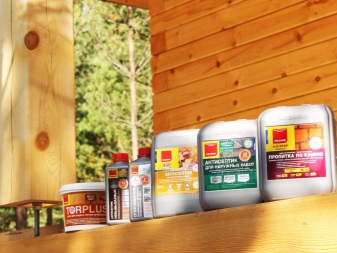
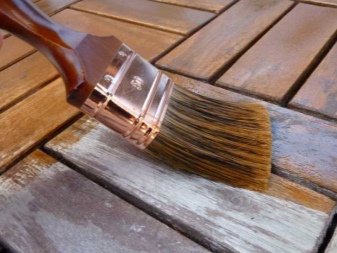
Features and purpose
Consider what antiseptic treatment is. This is the name of the process of impregnating wood with various chemicals that preserve it inside. The fact is that wood, in essence, consists of two most important components - lignin and cellulose. Lignin has a well-developed multidimensional structure and has a fairly high compressive strength. Cellulose is a linear polymer. She is responsible for the flexibility of the material.
Given the environmental friendliness of a tree, in the process of its development, it forms organic matter from inorganics, and after its death, the tissues are processed by saprophytes. In fact, it is a fungus. They feed on dead wood fibers and transform them into mineral-type substances.
At the same time, such organisms secrete special enzymes and build up mycelium under certain conditions. Usually they are wood-staining or wood-destroying.
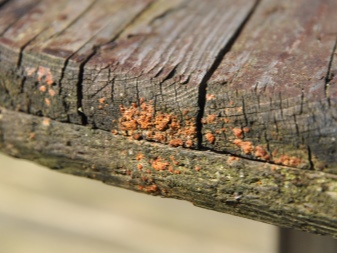

The first category, in principle, simply gives the tree some color and does not have a too serious destructive effect on the material. Although this is a sign that the material may have more serious problems and suffer from decay. But the second category can destroy wood completely, transforming it into humus or, in general, dust.
As a rule, mold and mildew from moisture appear. When there is too much of it, it creates a comfortable environment for the emergence of new microorganisms.
And just to protect against the destructive effects of various microorganisms, insect pests and aggressive natural factors, the board needs antiseptic impregnation. It should be applied at all harvesting stages and during processing for construction use. The type and proportion of this type of substance required may differ depending on the type of lumber and the wood species from which it is made.
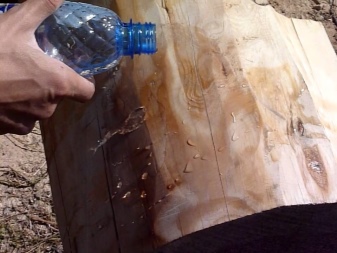

It should be said that biosecurity for the material in question can be in the form of impregnation or substance, which creates a protective film on the surface. There are also non-washable antiseptic substances for wood that reliably protect the material and buildings made of it without the need for further staining.
In addition, there are other types of agents in question that are used for boards and lumber that have already been contaminated.
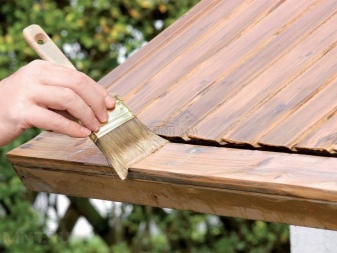
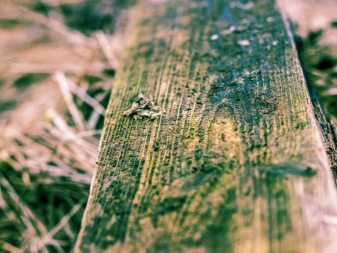
Description of species
It should be said that there are a fairly large number of various kinds of antiseptics, differing not only in composition, but also in the effect they have on the tree. In this regard, this category of substances can be divided into the following groups:
-
by composition;
-
by segment of use;
-
by the method of application;
-
by the degree of efficiency;
-
by functionality.
Let's try to consider each of them in more detail.

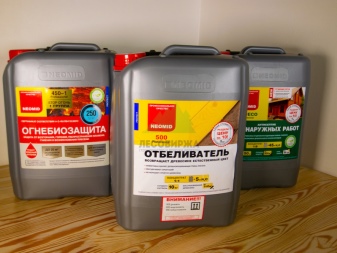
By composition
By the type of substances that were used to create biosecurity for lumber, an antiseptic can belong to one of the following categories.
-
Water based. These are usually used for preventive purposes. That is, they are usually applied to a surface that will not come into contact with water. Naturally, one should not forget that after application, the material must dry. Sometimes, after processing, the wood can crack and even change.

- Oil based. They are used when protection against contact with water is required. And when you need permanent protection. Such substances have their drawbacks. The main ones can be called a very persistent unpleasant odor, as well as serious flammability. Their use also changes the color of the material. Most often, any acrylic option can be attributed to this category.
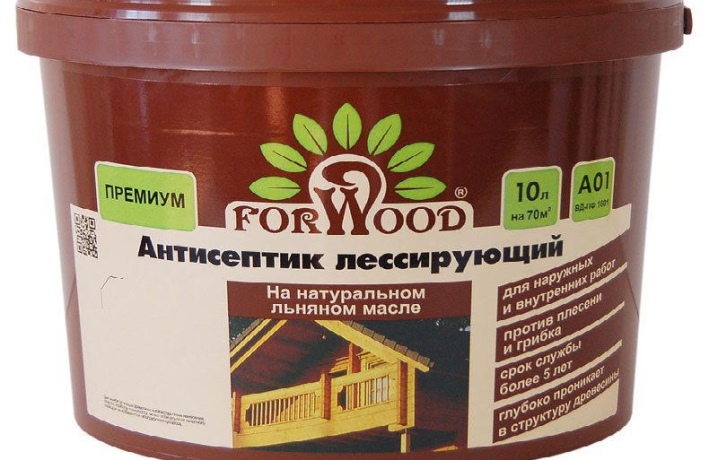
- Organic based. They are often used to process these materials not only outside, but also in the buildings themselves. Their use allows the formation of a thin film that completely covers the tree. It is she who gives it water-repellent characteristics and significantly improves adhesion.

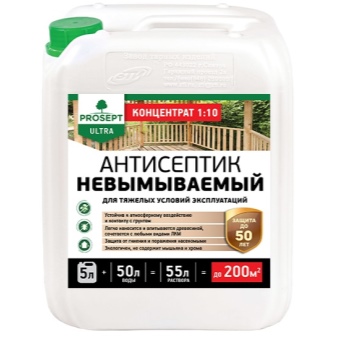
- Combined type. This concentrate combines various properties. The combined antiseptic not only protects the biotype, but also makes it resistant to fire. This can be called a fire retardant antiseptic.
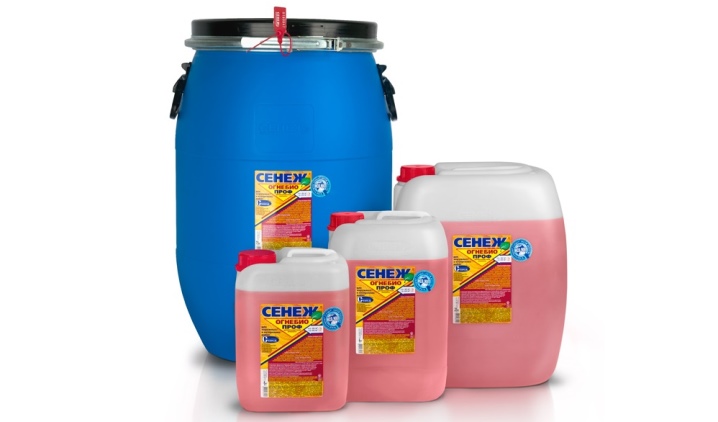
By area of application
According to this criterion, there are two large groups of substances for wood.
-
For indoor work. After use, the processed material receives a film that prevents the fumes of toxic substances when released into the air. This allows you to protect the wood without harming human health. We add that this category of substances is stable, and the processed materials do not require constant processing every year. But depending on the direction of application of the room, the types of biosecurity may differ. If the room is often hot and humid, then it is better to choose solutions for steam rooms. To make the correct selection of material, you should familiarize yourself with the accompanying documentation before buying. It must be indicated there that a particular solution is safe for humans and nature.
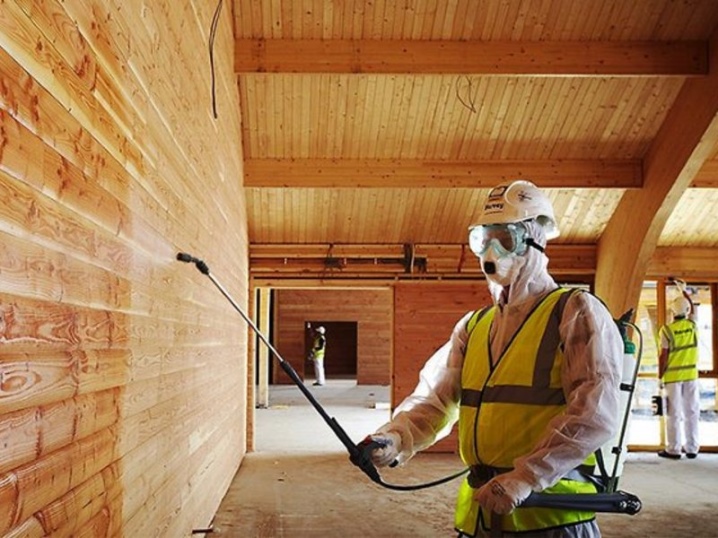
-
For work of an external nature. Such an antiseptic paint for outdoor use will be an excellent solution, because the wood outside the buildings will experience the permanent destructive influence of natural factors. This means that such substances must be of deep penetration, difficult to wash off and have a covering effect. They have a characteristic unpleasant odor, which usually disappears after the material dries. Usually it means that the smell disappears within 30-60 days after application. Such substances are distinguished by high hydrophobia, strong resistance to ultraviolet radiation, as well as complete unsuitability for use in buildings. They are usually divided into the following groups:
-
compounds that penetrate deeply into the material, which are called impregnations;
-
topcoats that protect lumber by forming a thin film;
-
combined or mixed - they usually have several protective effects at once.
-

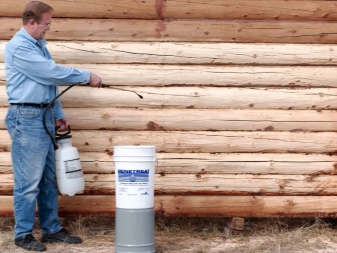
By application method
Another criterion by which antiseptics can differ is the application technique. Let's take a closer look at each of them.
-
With surface application. Here you will need a brush, roller, special pump or spray gun. You can also use the capillary technique and diffusion.
-
With deep application. In this case, the timber is completely immersed in a solution, which can be hot or cold. With high-quality impregnation, everything will depend on the tree species. This also includes the high pressure autoclaving method using evacuation.
It should be added that it is better to treat dry wood with an organic or water antiseptic. True, some will be inconvenient to use due to poor adhesion. If the wood is damp, then it just needs to be treated with an antiseptic or soaked.

By the degree of efficiency
Each type of biosecurity is used to combat various problems that may be specific to the material in question. There are substances that are already used for affected materials. The degree of damage can be different:
-
easy, when there are almost no traces of defeat;
-
medium, when traces are very small;
-
strong when the material is heavily affected by mold or mildew.
Each case requires the use of special equipment. But if we talk about the very degree of efficiency, then this indicator is conditional, because, in principle, all means aim to provide the tree with reliable protection from pests and minimize the risk of damage to the material.
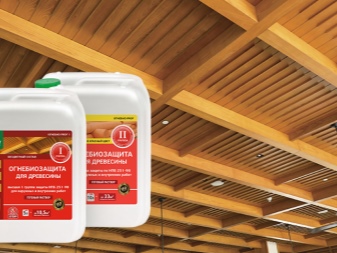
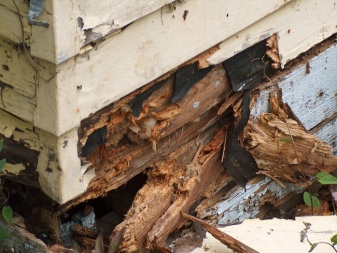
By functionality
The last criterion by which the types of biosecurity for a tree can be divided is functionality. Among the problems that antiseptics can solve are:
-
the use of low-quality insulation;
-
bioprotection applied to lumber at the wrong time;
-
violation of material storage conditions;
-
the effect of water on wood;
-
storage of lumber with poor ventilation or its complete absence.
In addition, most of the substances under consideration have a directed effect on the material: it restores color, increases resistance to fire, corrects damage caused by insects and microorganisms.
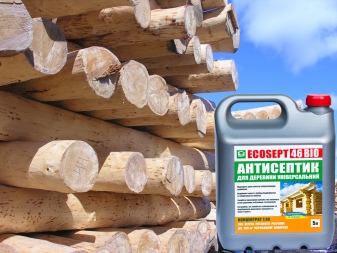
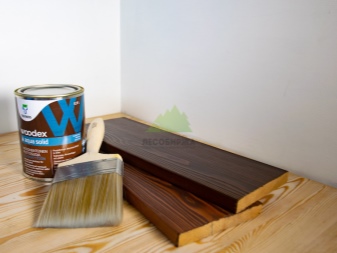
Rating of the best manufacturers
Now we will give a small top-list of manufacturers of the considered materials for woodworking. If we talk about fire-resistant antiseptics, then the most interesting can be called Pirilax-Lux. It is produced in Russia. It does not contain such toxic substances as fluorides and methyl alcohol. It can be used both indoors and outdoors. It is a wonderful fully wood-covering antiseptic that can be used for all types of wood. It is usually applied in several layers. It differs in viscosity, which is why it does not need to be diluted.
The advantage will be the ability to apply at a negative temperature. The downside is the lack of a UV filter, which is why after a couple of years the wood that was treated with it will begin to darken, which means that you will need to use a toning analogue.
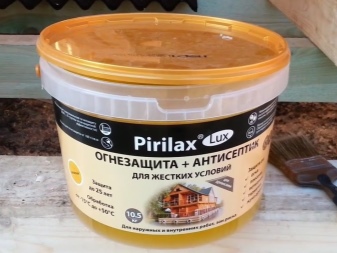
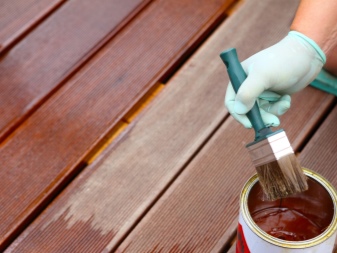
Another representative of this group is Senezh Ognebio Prof. This is a domestic product. It is used for the treatment of boiler rooms and gives fire-retardant properties to wood. It is not afraid of temperature extremes and absorbs very quickly, which makes it possible to give the surface a shine. It is mahogany or sometimes red. Service life - 20 years. There is no smell.
The composition dries quickly, however, it has a high consumption.

If we talk about substances for outdoor work, then we should mention Wood Protect. It has good dirt and water repellency. Made on an acrylic-alkyd base. Used for processing hardwood and softwood. This glazing composition emphasizes the structure of the wood, and therefore is used almost everywhere, except for floors and parquet. This material is completely safe and meets all international standards. In addition, it does not drip when applied. The only negative is that it dries for a long time.
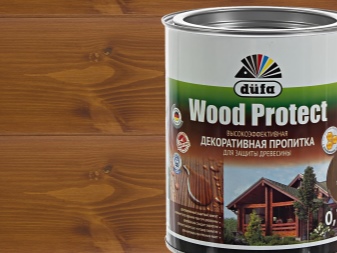
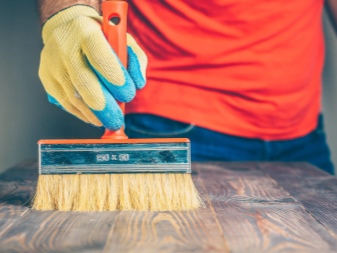
Another antiseptic of this type is Pinotex Ext. Has a white or translucent color. It is also used for outdoor use. It contains additives to combat mold and blue stains. Wood treated with such a composition will be resistant to atmospheric factors. It is absorbed quickly and forms a good film.
Product consumption will depend on the category of wood.
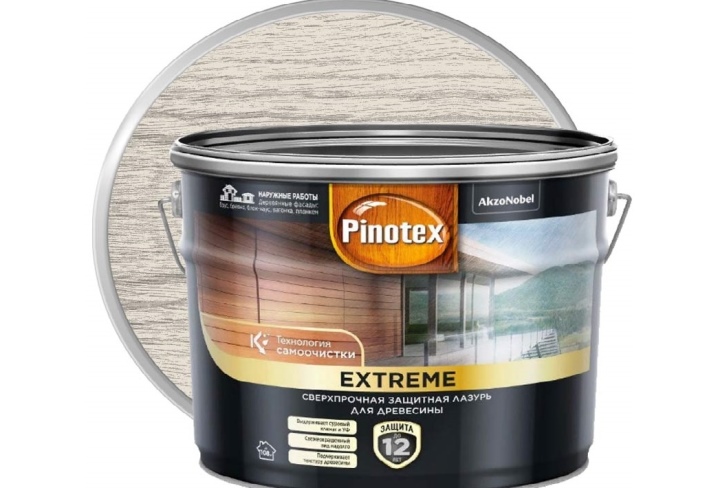
If we talk about antiseptics for internal work, then we should call "Master Lazur". A matt acrylic-based tinting compound that protects the wood and gives it a beautiful color. It does not form a film, it is perfectly absorbed and focuses on the structure of the wood. The composition is released in finished form. Has no smell and can last up to 2 years. It dries up in just 1 day, which is an excellent indicator.
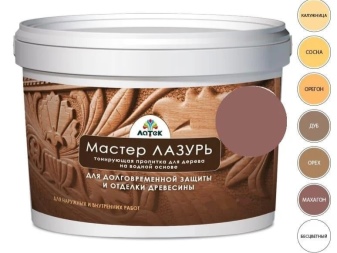
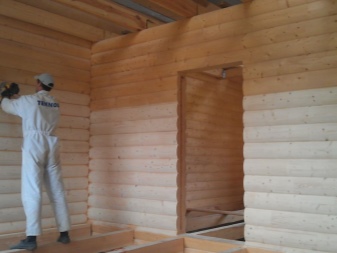
Another analogue is Belinka Lasur from a well-known Slovenian manufacturer of varnishes and paints. There is a whole lineup with 17 different shades, including green. It can be applied in three layers. At the same time, the upper one will not create a protective film. This is possible due to the good penetration of the impregnation into the lumber. Belinka Lasur consists of pigments, alkyd-type resins, water-repellent type substances and organic solvents. It is easy to apply, forms a matte finish and adheres very well from the first coat.
The only drawback is a strong, unpleasant odor.
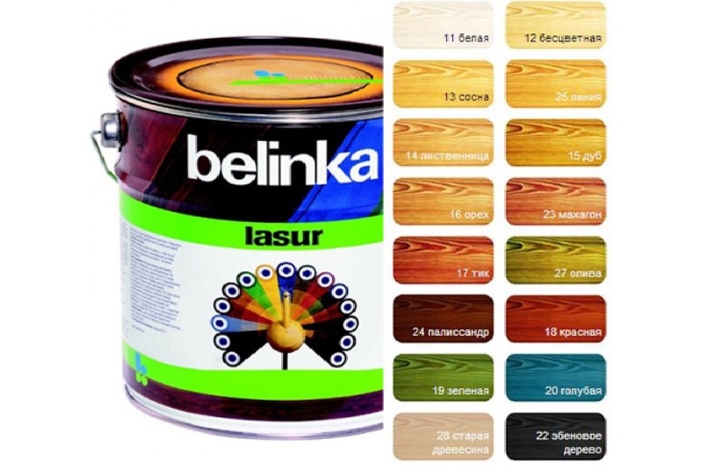
Which antiseptic to choose?
When choosing an antiseptic agent, several aspects should be taken into account.
-
Appointment. There are a number of fairly highly specialized substances designed to solve a specific problem: improving water-repellent characteristics, fighting mold, increasing refractory properties. But there are universal solutions that improve several material properties at once. Most often they are bought.
-
The degree of penetration into the structure of the material. According to this criterion, impregnations are:
-
deep;
-
superficial, they cover the material from above and penetrate into it by a maximum of 0.3 centimeters, and deep ones - to a depth of 1 centimeter.
-
-
The duration of the activity of the coating of a protective nature. Depending on a number of factors, the duration of the substance's action can vary in the range of 2-7 years. Under the influence of aggressive destructive factors, the coating will gradually lose its characteristics. Therefore, manufacturers' statements about the durability of the coating for 30 years are not true.
-
Operating characteristics. The most significant are:
- Consumption rate. This indicator will determine how economical the consumption per 1 m2 of substance will be. Usually, the rate is indicated with the calculation of the application of 1 layer. Most often, it varies in the range of 180-260 grams per square meter. For biosecurity and fire retardants, the values will be in the range of 350-600 grams per square meter. It is best to calculate the quantity in advance. This is important if the volume of work will be large. To do this correctly, you should calculate the surface area for processing in linear meters.
- Washable. Usually, on the package with the solution, you can find the corresponding mark: B - washable, HB - non-washable, LV - easy to wash, TV - hard to wash.
- Release form. Antiseptic for wood can be different - from dry mix and varnish to emulsion or powder.
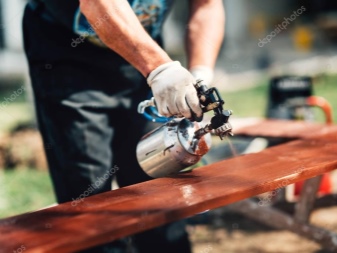
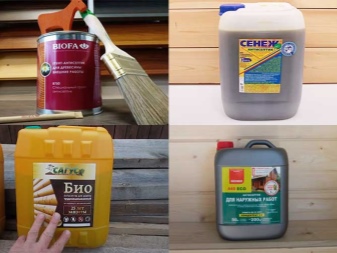
In addition to these points, attention should be paid to other points: corrosiveness, color of wood that has already been impregnated, active substances in the composition, as well as the possibility of tinting.
The manufacturer of the product will also be important. After all, the more famous the brand, the better its products will be. The most recognized in this segment are:
-
Pirilax;
-
Pinotex;
-
Belinka;
-
Tikkurila;
-
Dufa Wood Protect.
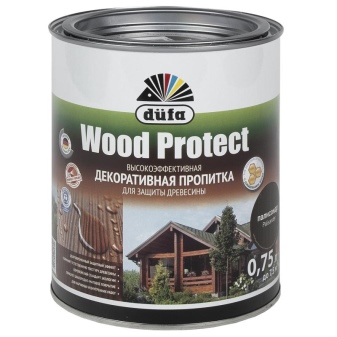
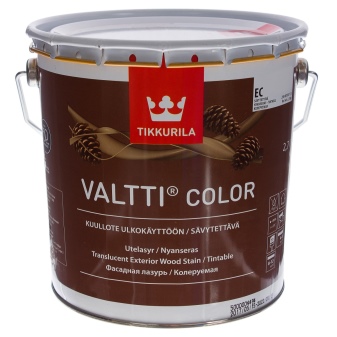
The last important criterion is compatibility with decorative coatings. If colorless varnishes or colored paint will be applied to the protection, then you should ask whether the selected antiseptic is compatible with such paints and varnishes.
How to do it yourself?
You can make such a mixture yourself in various ways. Here are two of them. In the first case, the basis will be a material such as bitumen, as well as gasoline or diesel fuel, which will need to be diluted. It should be said that when purchasing gasoline at a gas station, you should use metal containers so as not to be afraid that static electricity can cause it to ignite.
You will also need to have on hand:
-
a metal container for heating bitumen;
-
stops for fixing the container over the fire;
-
a metal spatula for mixing the solution.
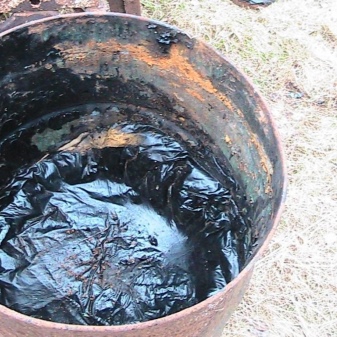

The actual process of creating a solution looks like this:
-
the container is filled with bitumen;
-
it is placed over the fire;
-
it should be heated until the bitumen is completely converted into a liquid mass, stir so that there are no lumps;
-
when the substance is slightly viscous, remove from heat and allow to cool slightly;
-
when this happens, add gasoline to the container in small portions to avoid dissolution.
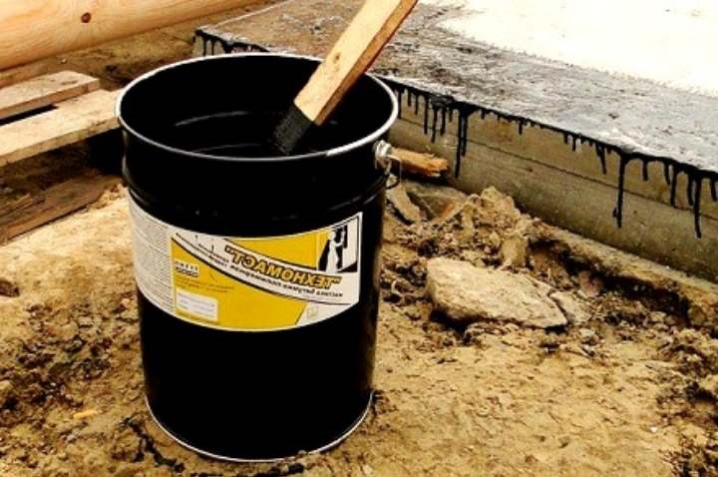
The proportions of gasoline and bitumen will depend on the initial state of the latter. An important indicator will be the preservation of the composition, which turned out, of fluidity at a temperature of about 19 degrees. The share of gasoline should be approximately 20-30%. But here it is necessary to take into account the viscosity of the bitumen, so the indicator may vary.
It is impossible to overheat the mixture, but also to heat it too slowly. The composition should be used immediately after preparation, as it quickly loses its properties. And it is required to do it, of course, on the street.
The second method will be implemented on the basis of creating a water-salt solution from certain proportions of the corresponding materials.
To increase the activity of the catalytic type water, it should be heated.
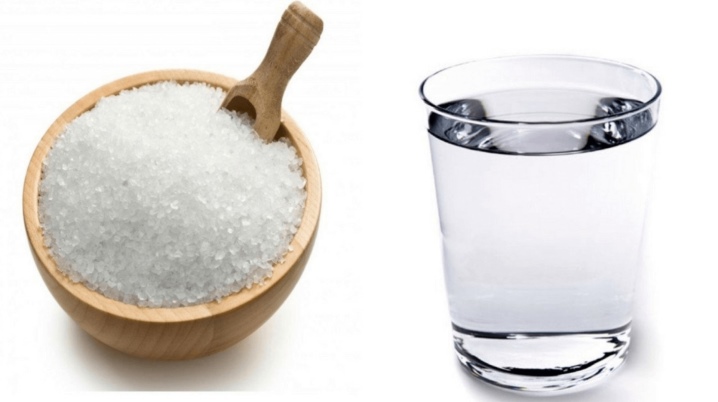
If we talk about proportions, then, in addition to water and salt, copper sulfate or iron sulfate, as well as sodium fluoride, will be required. And then there may be variations.
-
When impregnating material for household structures, a weak solution of water and sodium fluoride will be required. A 10-liter bucket needs 50-400 grams. If the structures are inside the building, then the solution may be weaker, and if outside, then stronger. For a visual understanding of the application of the substance, 10 grams of potassium permanganate can be added there.
-
For the processing of lumber that will be in contact with the ground, solutions are used on sulfates, that is, vitriol. Add 1-2 kilograms to a bucket of water. In this case, for everything to work out, the wood must be dry, and the impregnation must be long.
For cooking, you will need hot water, a stirrer and a container. The composition can be applied only after cooling and settling, having previously immersed it in the sprayer.
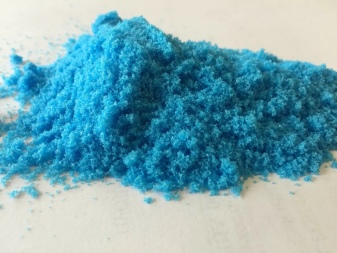
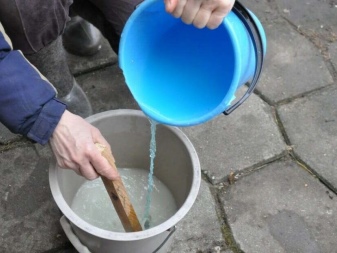
Wood processing rules
When applying antiseptic agents, safety rules must be observed. In addition, there are substances that must be applied once in a while. Another important point is that the drug should be changed every time so that the microorganisms simply do not get used to it and acquire immunity.
It is important that modern antiseptics do not have a strong odor, and they often need to be applied several times to obtain the desired effect.
And also before carrying out work, you should make sure that the wood is dry and clean. If necessary, it can be cleaned with a scraper or solvent.
If the tree is wet or frozen, then the treatment should be discarded.
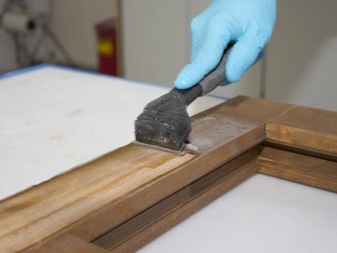
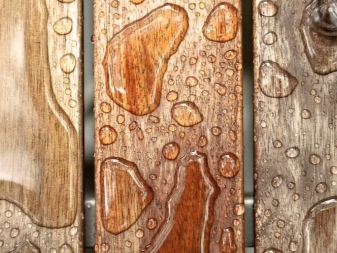
Before starting the surface treatment, you should first apply an antiseptic primer to the damaged areas and the places where the sawing occurred. And only then for all the rest.
If the wood is damp, the tinting antiseptic can be applied with a spray gun, brush or roller. Another important point is that alcohol-based substances should be used to kill insects. They are injected into the wormholes with a syringe, after which the lumber is processed.
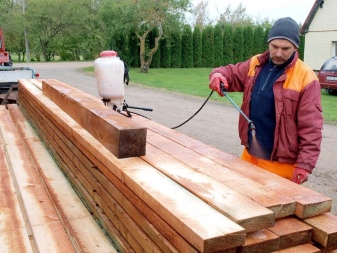
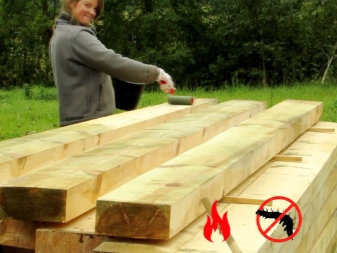
How to make an antiseptic with your own hands, see the video.













Of all the manufacturers of antiseptics presented in the article, I perfectly know the line from Dufa, I myself use their antiseptics and not only. The quality is high, it covers and penetrates the wood perfectly. Protects wood quality, time-tested.
The comment was sent successfully.